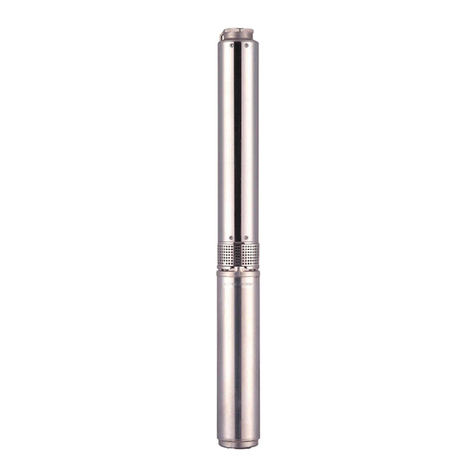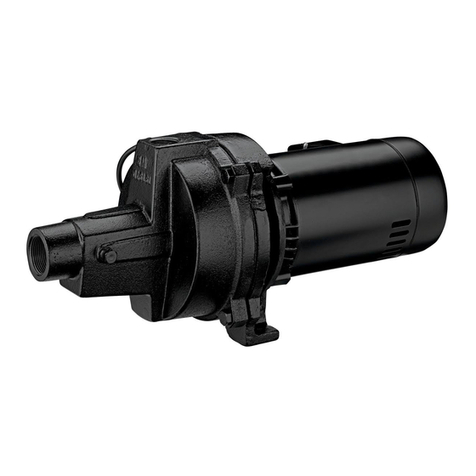
SPRAYER PLUMBING SUGGESTIONS
PUMP MOUNTING
HYDRAULIC SYSTEM CONNECTIONS
HYDRAULIC MOTOR SEALS
The primary goal when plumbing a sprayer pump is to route liquid from the pump to the spray
boom with minimum restriction. Minimizing restrictions is necessary for achieving the pump’s
maximum rated capacity. 1) Hoses should be the same size as the pump’s suction and
discharge port. A straight run of 10 times the suction hose diameter is recommended prior to
the pump inlet. 2) Install a pressure gauge and ball valve on the discharge side of the pump
for the purpose of measuring the SHUT-OFF pressure (refer to page 4). 3) A minimum number
of elbows, ttings, and valves should be used to reduce pressure losses. 4) Use spray control
valves and a owmeter that are the same size as the discharge port to prevent ow restriction.
Following these guidelines is necessary for delivering the highest pressures to the boom.
The following are basic guidelines for proper pump mounting: 1) The pump should be mounted below
the tanks to allow gravity to naturally ll the pump with liquid. 2) The volute should be oriented with the
discharge port pointing up or across the top of the pump which allows air to rise out of the pump. 3) A
petcock valve can be installed in the top most pipe plug hole to allow air to be bled off each time the
tanks are lled. 4) Another option would be to install a 1/8” air bleed line from the top most pipe plug
hole to the sprayer tank. This will continually bleed air from the pump housing. 5) If the pump must
be located above the liquid level, a foot valve should be installed to maintain the pump’s prime.
The hydraulic driven centrifugal pumps are straight centrifugals and must be primed prior to operation.
The word “primed” means the pump must be completely full of water and any trapped air vented before
a centrifugal pump can operate. Following the pump mounting guidelines will insure proper priming of
the pump and avoid premature seal failure.
The following hydraulic connection recommendations are important for optimum pump efciency and
extended motor seal life. 1) Hydraulic hoses should be sized to insure proper oil supply to the motor
and minimize back pressure on the return side of the motor. Recommended hose sizes are 1/2” for
200 Series motors and 3/4” for 300 Series motors. The hoses should be sized larger if individual hose
lengths exceed 15 feet. 2) Connect the hydraulic hoses to the tractor hydraulic couplers so the pump
operates with the control lever in the “Lower/Retract” position. The pump can then be turned off in
the forward “Float” position. Turning the pump off in “Float” instead of “Neutral” allows the hydraulic
system pressure to equalize and reduces the occurrence of damaging pressure spikes. 3) The return
line should be connected to a low pressure return port if available. The low pressure return port returns
oil directly to the oil reservoir reducing pressure in the return line. Pressure reduction in the return line
extends the motor seal life and increases the motors operating efciency. Consult your tractor dealer
for low pressure return options.
Hydraulic seal failures are typically caused by high pressure or pressure spikes in the return line.
The seal is rated for 250 PSI maximum pressure. Maintaining return line below 100 PSI continuous
pressure will assure maximum seal life and efcient operation. Minimize back pressures in the return
line by plumbing an unobstructed return back to the hydraulic reservoir or motor return port. Avoid
returning the oil through remote valves, couplers, and long undersized hose lengths. Consult your
tractor dealer for low pressure return options.
Do not install any hydraulic components in series downstream from the sprayer pump motor.
Consult Ace Product Update 1 - Hydraulic Seals for additional information.
3





























